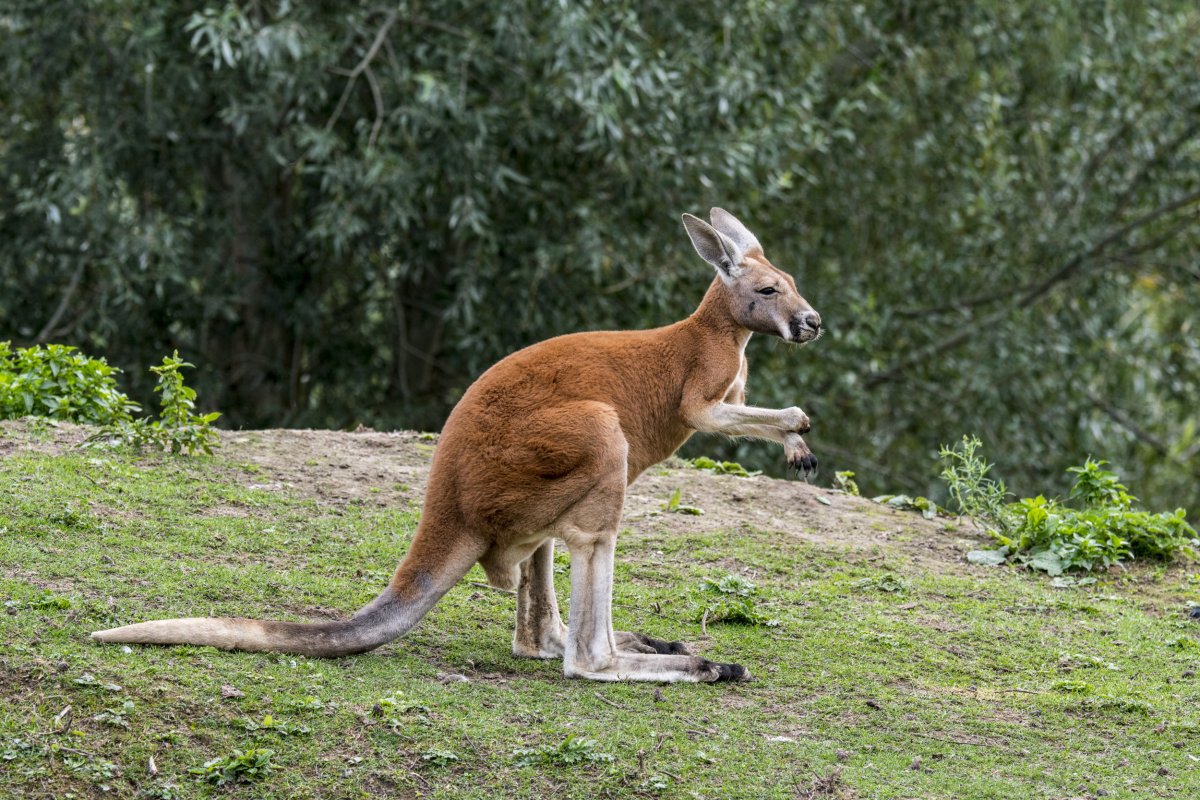A team of researchers has identified three new species of giant kangaroos after examining fossils from Australia.
Paleontologists from Adelaide's Flinders University recently reviewed multiple complete kangaroo fossils from Lake Callabonna in South Australia that were discovered in 2013, 2018 and 2019. By reviewing all species of Protemnodon, a genus of extinct kangaroos that lived from 5 million to 40,000 years ago, researchers identified three new species of kangaroos, one of which is twice the size of the largest red kangaroo alive today, according to a university press release.
The findings of the study's lead researcher, Isaac Kerr, and his co-authors were recently published in Megataxa.

The discovery revealed attributes of the new species that differed greatly from each other—for example, the kangaroos lived in different environments and hopped in different ways.
The new species were named Protemnodon viator, Protemnodon mamkurra and Protemnodon dawsonae. The former was the biggest species identified by the researchers—reaching twice the size of red male kangaroos today. Red kangaroos can stand up to nearly 6 feet.
The study said Protemnodon viator was being named for its long-limbed nature, which allowed it to "hop fairly quickly, the press release said.
The other species, Protemnodon mamkurra and Protemnodon dawsonae, were identified when researchers examined the work of early researchers.
Protemnodon mamkurra likely moved on all four legs, making it slower than Protemnodon viator. "A large but thick-boned and robust kangaroo, it was probably fairly slow-moving and inefficient. It may have hopped only rarely, perhaps just when startled," Kerr said.
Kerr's research spans five years. The researchers photographed and 3-D-scanned more than 800 specimens collected from Australia and New Guinea and compared them.
"It was quite the undertaking," Kerr said, according to the press release. "It feels so good to finally have it out in the world, after five years of research, 261 pages and more than 100,000 words. I really hope that it helps more studies of Protemnodon happen, so we can find out more of what these kangaroos were doing.
"Living kangaroos are already such remarkable animals, so it's amazing to think what these peculiar giant kangaroos could have been getting up to," he added.
All Protemnodon species went extinct on mainland Australia 40,000 years ago, and the reason isn't clear, especially because many species differed in size, habitat and other markers. Researchers are studying why similar animals, like wallaroos and gray kangaroos, didn't experience the same fate.
"It's great to have some clarity on the identities of the species of Protemnodon," Flinders professor Gavin Prideaux, a co-author of the Megataxa study, said about the species in the press release.
Prideaux told Newsweek that the research team is preparing to head to Papua New Guinea to "search for fossils of the early species of Protemnodon and other animals that lived alongside them."
Prideaux also said in the release, "The fossils of this genus are widespread and they're found regularly, but more often than not you have no way of being certain which species you're looking at. This study may help researchers feel more confident when working with Protemnodon."
Update 4/16/24, 2:55 p.m. ET: This story was updated to include a comment from study co-author Gavin Prideaux.
Uncommon Knowledge
Newsweek is committed to challenging conventional wisdom and finding connections in the search for common ground.
Newsweek is committed to challenging conventional wisdom and finding connections in the search for common ground.
About the writer
Anna Skinner is a Newsweek senior reporter based in Indianapolis. Her focus is reporting on the climate, environment and weather ... Read more
To read how Newsweek uses AI as a newsroom tool, Click here.








